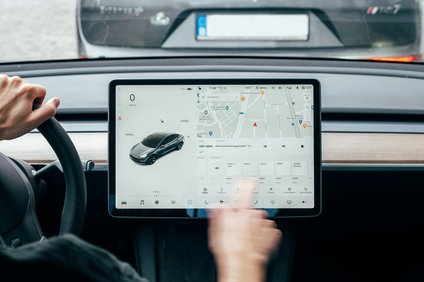Research - 03.11.2021 - 00:00
11th Consumer Barometer of Renewable Energy
Climate change is now recognized as a reality by a large majority of the population. 78 percent of the Swiss say they have never experienced as many extreme weather events as in 2021. For nine out of ten respondents, climate protection remains very important in times of the pandemic. The latest edition of the Consumer Barometer of Renewable Energy shows that there is an increasing demand for climate-friendly solutions for mobility and buildings in Switzerland. There is growth potential above all in the convergence of solar energy, electric mobility, heat pumps and battery storage. The study was conducted by the University of St.Gallen in cooperation with Raiffeisen Switzerland and EnergieSchweiz.

3 November 2021. 68 percent of the Swiss population agree or rather agree with the statement that the rejection of the CO2 Act in June 2021 was not a "no" to climate protection. In view of the extreme weather events of last summer, the respondents see a need for action by companies, politicians and educators. 77 percent think that the Swiss National Bank should pay more attention to climate protection in its investments. 62 percent of respondents see banks' investments in fossil energy projects (coal, oil, gas) abroad as a risk for the Swiss financial centre. 94 percent believe that Swiss energy suppliers should invest more in renewable energies domestically. And 83 percent say that more time and attention should be devoted to climate protection in schools and universities.
Technology convergence: «Early Electrifiers» as a new driving force
More than half of CO2 emissions are caused by the use of fossil fuels in buildings and transport. The electrification of end use, in combination with renewable energies, can make a decisive contribution to reducing emissions. Four key technologies in this area are experiencing high growth rates: solar energy (photovoltaics), battery storage, heat pumps and electric mobility. While heat pumps have been very popular with Swiss homeowners for a long time, the growth of solar energy and electric mobility in particular is currently exponential. The results of the consumer barometer allow conclusions to be drawn about the characteristics of this target group of "early electrifiers": they are evenly distributed across the language regions, tend to be male and well educated, tend to live in urban areas and have an above-average income.
Electric mobility: «My home is my charging station»
In view of the increasing variety of electric vehicle models, the focus is shifting to the topic of charging infrastructure. In Switzerland, this confirms the trend in other pioneering countries of electric mobility (e.g. Norway), according to which the vehicle is primarily charged at home. Those intending to buy an electric car expect to do an average of 71 percent of their charging at home. Among actual electric car owners, this figure even rises to 87 percent. The public charging infrastructure is considered sufficient or rather sufficient by 24 percent of prospective buyers – after the purchase, this figure rises to 66 percent. There is room for improvement in the charging infrastructure at the workplace: prospective buyers think they charge here every tenth time; in the actual experience of electric car owners, it is even only 1 percent. If employers increasingly offer charging options at work, this could further support the spread of electromobility. This could also open up new target groups, for example tenants without their own parking space. Because a lot of solar power is produced during the day, charging at the workplace can also contribute to the integration of renewable energies into the electricity grid.
Building-integrated photovoltaics (BIPV): the unknown beauty
Today, the growth of solar energy takes place mainly in the form of building-attached systems, where standardised photovoltaic modules are retrofitted onto existing roof surfaces. An alternative is offered by building-integrated PV systems, which replace conventional roof tiles or façade elements and thus turn the building envelope into a power plant. Building-integrated photovoltaics (BIPV) is still largely unknown to Swiss consumers: Only 1 percent of respondents say they own a BIPV system themselves, while another 15 percent have already seen a BIPV system. After being shown seven photos of Swiss BIPV installations, 77 percent of the respondents say they find this form of solar energy attractive, and 65 percent see it as a value-adding investment in the building sector.
The detailed study results, illustrated infographics and further information can be downloaded at: www.kuba.iwoe.unisg.ch
Find the results also in our latest video.
Contact for further information:
Prof. Dr. Rolf Wüstenhagen, Chair of Management of Renewable Energies, Institute for Economy and the Environment (IWÖ-HSG)
+41 76 306 43 13, rolf.wuestenhagen(at)unisg.ch
Contacts for queries to the survey partners:
Pius Schärli, Raiffeisen Switzerland, Market Communications, pius.schaerli(at)raiffeisen.ch
Raphael Zürcher, Swiss Federal Office of Energy, EnergieSchweiz, raphael.zuercher(at)bfe.admin.ch
More articles from the same category
Discover our special topics











